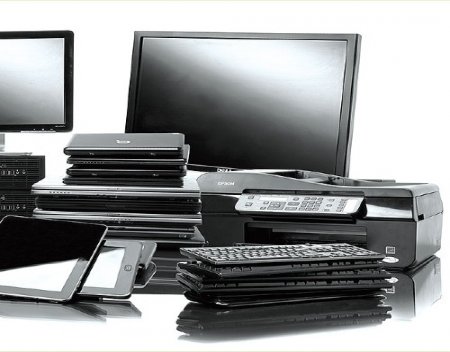The Importance of IT Recycling
by Nationalcws.com on February 28, 2022
Through new devices, society has reaped tremendous benefits. This drastic growth in the electronics industry, however, has led to a rapidly escalating issue of end-of-life (EOL) electronics or e-waste. In landfills or recycling operations, toxic materials can be released from old electronic devices into the environment.
People still seek information on IT recycling and other programs that will help them responsibly get rid of unwanted equipment while minimizing any risk of data or identity theft. Today we'll be looking at some of the basic questions, such as defining e-waste, exploring why it is important, and everything you need to know about IT recycling.
How Can Consumers Recycle Their Old Electronics Devices?
Consumers have access to recycling opportunities, depending on where they live. Thinking regarding the electronics recycling hierarchy, the best choice is to donate computer equipment that can be refurbished or reused as is, provided that personal information is scrubbed from devices. Other recycling opportunities include authorized electronics recycler locations, electronics recycling events, or retailer take back programs such as those offered by Staples, Office Depot or Best Buy.
What Is E-Waste
These EOL electronic devices, also known as e-waste and e-scrap, includes such items as dated computer equipment, stereos, televisions, and mobile phones. Such things can often be refurbished or recycled, yet a significant amount still finds its way to the landfill. Only 20% of global e-waste is formally recycled the remaining 80% often incinerated or dumped in landfills. In the U.S., the recycling rate is closer to 25%, with much of the e-waste being shipped offshore.
Why Is IT Recycling Important?
• Solid Waste Management. Because the explosion of growth in the electronics industry, combined with short product life cycle has led to a rapid escalation in the generation of solid waste.
• International Movement of Hazardous Waste The uncontrolled movement of e-waste to countries where cheap labor and primitive approaches to recycling have resulted in health risks to residents exposed to the release of toxins continues to an issue of concern.
• Rich Source of Raw Materials Internationally, only 10-15 percent of the gold in e-waste is successfully recovered while the rest is lost. Ironically, electronic waste contains deposits of precious metal estimated to be between 40 and 50 times richer than ores mined from the earth, according to the United Nations.

